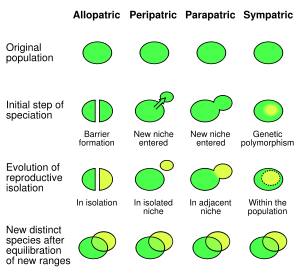 |
| Edward Jenner's smallpox vaccination |
Bring to mind the now famous 'first scientific exploration of vaccination', when, in the late 1700's, Edward Jenner - an English physician - first came up with the idea of using a non-pathogenic cowpox virus to vaccinate people against its deadly relative, smallpox (variola virus).
Well, this virus and others like it, such as vaccinia virus (and its own viral derivatives, like the highly attenuated modified vaccinia virus Ankara) have been used worldwide to protect human populations from contracting smallpox (See dryvax and it's recombinant clone ACAM2000), which resulted in the eradication of variola virus during the second half of last century. These viruses are thought to all trace there ancestry back to cowpox isolates from around Jenner's time in the late 1700's, yet we don't really know for 100% where they originated.
Despite its renowned success, showing society the power of vaccination, the origins of cowpox have so far remained elusive. The story goes that Jenner's original cowpox isolate, through generations and generations has somehow become what we know of as vaccinia virus but how is anyone's guess. Maybe recombination with other poxviruses out there or maybe it is the last living representative of an extinct virus is the reason why.
 |
| What human cowpox looks like |
Now, an international team of researchers (see paper here) has shed light on it's origins by sequencing and studying whole genomes - contrary to the single-gene-centric studies in the past - of multiple currently circulating isolates of cowpox from around the world in order to uncover the secrets of poxvirus evolution in general.
Viruses are a haven of genetic diversity - even DNA viruses, which have been largely ignored on that front in favor of their more mutation-prone RNA cousins; this fact is no more apparent than in the case of poxviruses. These viruses, including smallpox and the re-emerging human pathogen monkeypox represent an immense amount of genotypic and phenotypic variation, which is in itself medically and evolutionarily important. Just think of the devastation that smallpox caused to the human population and have a look at what monkeypox has been up to.
 |
| False-color electron micrograph of vaccinia virus particle |
This group compared the DNA of the cowpox strains to other closely related pox viruses, such as: smallpox itself, monkeypox, camelpox and tatera pox (viruses which themselves have a difficult to trace past) as well as current vaccine vaccinia strains. They thus generated large phylogenetic trees based on the compared sequence and then mapped these onto a map of Europe to see if they could uncover some geographical pattern of cowpox evolution.
This analysis found an as yet unappreciated diversity hidden under what we called 'cowpox viruses' through identification of a number of well-defined monophyletic groups that should in their own rights be designated separate species. Interestingly, it also appears that our vaccine strain has jumped species to horses and buffalo as viruses isolated from these species have close relatives in vaccinia-like strains.
Cowpox viruses were found to cluster in two major groups - cowpox like and vaccinia virus like suggesting that our smallpox 'vaccinia' vaccine potentially originated as a cowpox virus (as we thought) yet it was endemic to mainland Europe, something that goes against the tale of Jenner's isolation of cowpox from the UK.
The authors suggest that further sampling of more isolates from within the UK and across Europe may clear up any taxonomic uncertainties here. What this work does highlight is the oft under appreciated diversity of large DNA viruses, especially the medically important pox viruses and the difficulties of doing evolutionary analysis on viruses which such large genomes who like to recombine with each other.






































 [/caption]
[/caption] [/caption]
[/caption]